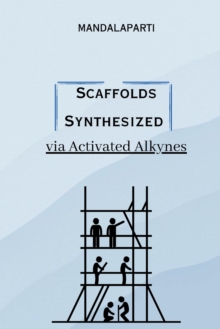Scaffolds are essential frameworks or backbones of complex organic molecules that determine their biological activity and function. The synthesis of biologically important scaffolds is a crucial task in the field of medicinal chemistry, as these scaffolds serve as the foundation for the design and development of new drugs.
One of the most promising methods for the synthesis of these scaffolds is via the activation of terminal alkynes. This process, known as alkyne metathesis, involves the reaction of two alkynes to form a cyclic compound, which can then be functionalized to create a variety of different scaffolds.
The use of activated alkynes in the synthesis of scaffolds offers several advantages over other methods. First, the reaction is highly selective, allowing for the synthesis of complex structures with minimal side products. Second, the reaction is highly efficient, with yields typically ranging from 70% to 90%. Finally, the reaction is compatible with a wide range of functional groups, allowing for the synthesis of highly diverse scaffolds.
One example of a scaffold that can be synthesized via activated alkynes is the benzofuran moiety. Benzofurans are an important class of compounds with a wide range of biological activities, including anti-inflammatory, anticancer, and antimicrobial properties. The synthesis of benzofurans via alkyne metathesis typically involves the reaction of a terminal alkyne with an aldehyde or ketone, followed by cyclization to form the benzofuran ring.
Another example of a scaffold that can be synthesized via activated alkynes is the pyrazole moiety. Pyrazoles are another important class of compounds with a wide range of biological activities, including anti-inflammatory, analgesic, and antipyretic properties. The synthesis of pyrazoles via alkyne metathesis typically involves the reaction of a terminal alkyne with a hydrazine or hydrazide, followed by cyclization to form the pyrazole ring.
In addition to benzofurans and pyrazoles, a wide range of other scaffolds can be synthesized via activated alkynes, including pyridines, indoles, and quinolines. The versatility of this method makes it an important tool in the design and synthesis of new drugs.
Despite the many advantages of alkyne metathesis, there are also some challenges associated with this method. One challenge is the need for a catalyst to promote the reaction. Although several different catalysts have been developed for this purpose, including molybdenum, ruthenium, and tungsten-based catalysts, there is still room for improvement in terms of efficiency and selectivity.
Another challenge is the potential for side reactions, particularly when working with highly reactive alkynes or functional groups. Careful attention to reaction conditions and substrate selection is necessary to minimize the risk of unwanted side products.
Overall, the synthesis of biologically important scaffolds via activated alkynes is a promising approach for the design and development of new drugs. With continued research and development in this field, it is likely that this method will become an increasingly important tool in medicinal chemistry.

